Coat of arms
West Suffolk Coat of Arms
In January 2019, the West Suffolk Shadow Council agreed to adopt the former West Suffolk Council Coat of Arms from 1 April 2019. This has now been agreed by the College of Arms:
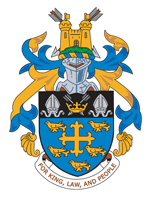 |
| West Suffolk Council Coat of Arms granted in 2019 |
- The letter of confirmation of the West Suffolk Council Coat of Arms (not accessible for screen readers)
- transcript of the letter of confirmation of the West Suffolk Council Coat of Arms:
-
Whereas Her Majesty The Queen by warrant under Her Royal Signet and Sign Manual bearing date the twenty-third day of October 2019 hath signified unto the Most Noble Edward William Duke of Norfolk Earl Marshal and Hereditary Marshal of England that she hath been graciously pleased to give and grant unto West Suffolk Council Her Royal Licence and Authority that it may bear and use the Arms and Crest granted and assigned unto West Suffolk County Council on the Ninth day of June 1959 the said Armorial Bearings being first duly exemplified according to the Laws of Arms and recorded in Her Majesty’s College of Arms otherwise the said Licence and Permission to be void and of none effect And forasmuch as the Earl Marshall did by warrant under his hand and seal bearing date the fifth day of November 2019 authorise and direct Us to exemplify the said Arms and crest pursuant to the tenor of the said Royal Warrant and according to the Laws of Arms. We do herby exemplify into the said West Suffolk Council the arms following that is to say: 'Azure a Cross Holy between five Martlets On a Chief Sable between two Mitres Argent two Arrows in saltire points downwards also Argent enfiling an Ancient Crown On and for the Crest on a Wreath Or and Azure in front of two arrows in saltire point downwards proper a Castle with two domed towers Flags flying thereon On a grassy Mount proper' which armorial bearings are duly recorded in the College of Arms In witness whereof We have hereunto subscribed Our names this twenty-first day of February 2020.
Thomas Woodcock Garter
P L Dickinson Clarenceux
Timothy Duke Norroy and Ulster
-
Armorial Bearings of the Borough of St Edmundsbury
The Armorial Bearings of the Borough of St Edmundsbury (pictured below) were as a result of the need for a new identity following the re-organisation of local government in 1974. Under the Local Government Act 1972, four local authority areas were combined to become the district of St Edmundsbury with effect from 1 April 1974. These were the:
- Borough of Bury St Edmunds
- Urban District of Haverhill
- Rural District of Clare
- Rural District of Thingoe
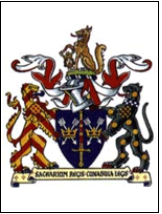 |
| Armorial bearings of the Borough of St Edmundsbury |
On 15 May 1974 the Queen granted a charter conferring borough status upon the new district. The original four local authority areas had their own coat of arms or official badges (pictured below). None of these were appropriate to identify the new Borough of St Edmundsbury.
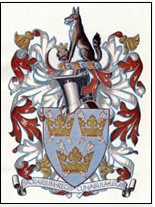 |
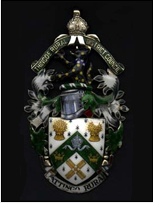 |
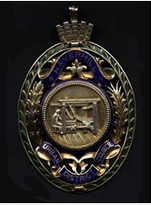 |
| Borough of Bury St Edmunds coat of arms, granted in 1606 | Rural District of Thingoe coat of arms, granted in 1958 | Haverhill official badge depicting a loom |
The newly formed St Edmundsbury Borough Council petitioned for a Grant of Armorial Bearings. The arms were designed by the College of Arms. With effect from 13 February 1975 the arms were reserved for the council. Letters patent (the method by which a coat of arms is granted) were granted by the Garter, Clarenceux and Norry and Ulster Kings of Arms on 21 June 1977.
Why have armorial bearings?
The functional purpose of arms is identification. They must be unique in order to identify one particular person or, as in this instance, a local authority and area. Heraldry (the system armorial bearings) is believed to have begun in the period 1130 to 1160. Historically, knights fought wearing steel armour, helmets and carried a shield. As the helmet completely covered their faces they were unrecognisable and so the practice of wearing a distinctive crest that was clearly visible (for example on their helmets or shields) arose.
Later, these crests, designs and mottos were registered by the College of Arms. They were handed down from father to son and became, the crest, arms and motto of the family. The right to bear arms is regarded as being in the nature of a dignity. Like all dignities, arms emanate from the sovereign.
Armorial bearings may be granted to organisations such as local authorities, universities, colleges, hospitals, learned societies, dioceses all of which have an existence recognisable by law. A grant of arms has to be registered by the College of Arms in the same way as arms granted to an individual. The College of Arms uses a complicated system of technical terms to describe a grant of arms so that they can be registered accurately, but in the fewest possible words. Many words derive from Latin or Norman French and go back to Medieval times. This description is known as a blazon.
How are the arms used today?
The bearing of arms may be seen as a symbol of power and authority derived from the crown, and perhaps could be seen to represent control and even oppression from above. In the modern state, the power and legitimacy of government and a council mainly derives from the democratic election of its members.
